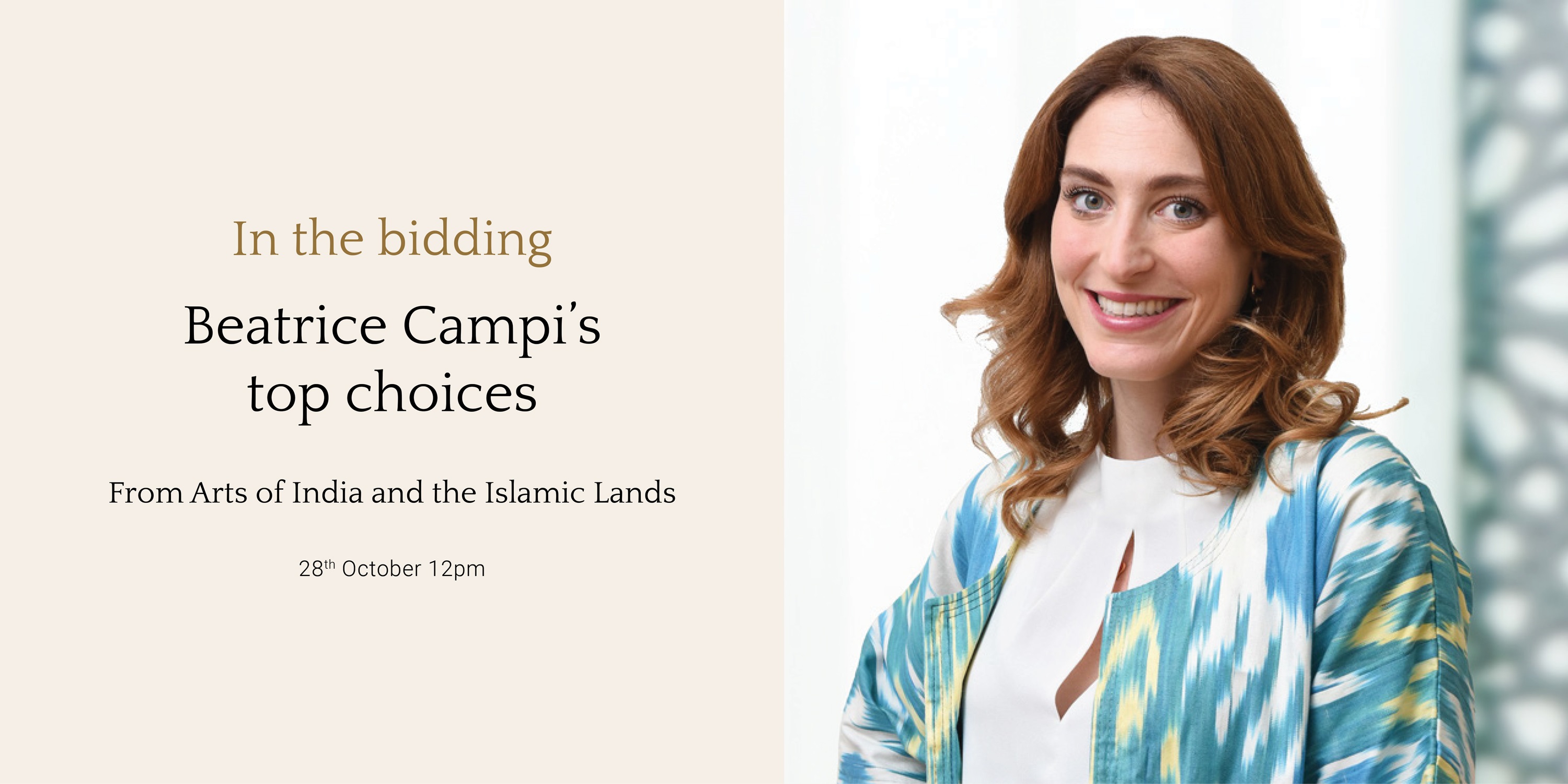

Sura an-Noor (Sura of Light) 24:35
TWO MOUNTED QAJAR NOMINAL SEALS WITH WOMAN'S NAME. Qajar Iran, one dated 1292 AH (1875 AD). Estimate £100 - £150
View lot
A LOOSE ILLUSTRATED SIKH ALBUM FOLIO: A GUNSMITH IN HIS WORKSHOP, AND ANOTHER PORTRAIT Punjab and Rajasthan, North India, second half 19th century. Estimate £5,000 - £8,000
View lot
AN ILLUMINATED OCTAGONAL MINIATURE QUR'AN. Safavid Iran, dated 22 Sha'ban 1017 AH (30 November 1608 AD). Estimate £7,000 - £10,000
View lot
AN ENGRAVED BRASS ASTROLABE. Safavid Iran, dated 1125 AH (1713 AD), signed by the maker Amin Mohammad Shams al-Din. Estimate £6,000 - £8,000
View lot
A GILT AND POLYCHROME-ENAMELLED CLEAR GLASS MOSQUE LAMP. Possibly Murano, Venice, Italy, ca. the late 1860s - 1890s. Estimate £12,000 - £18,000
View lot